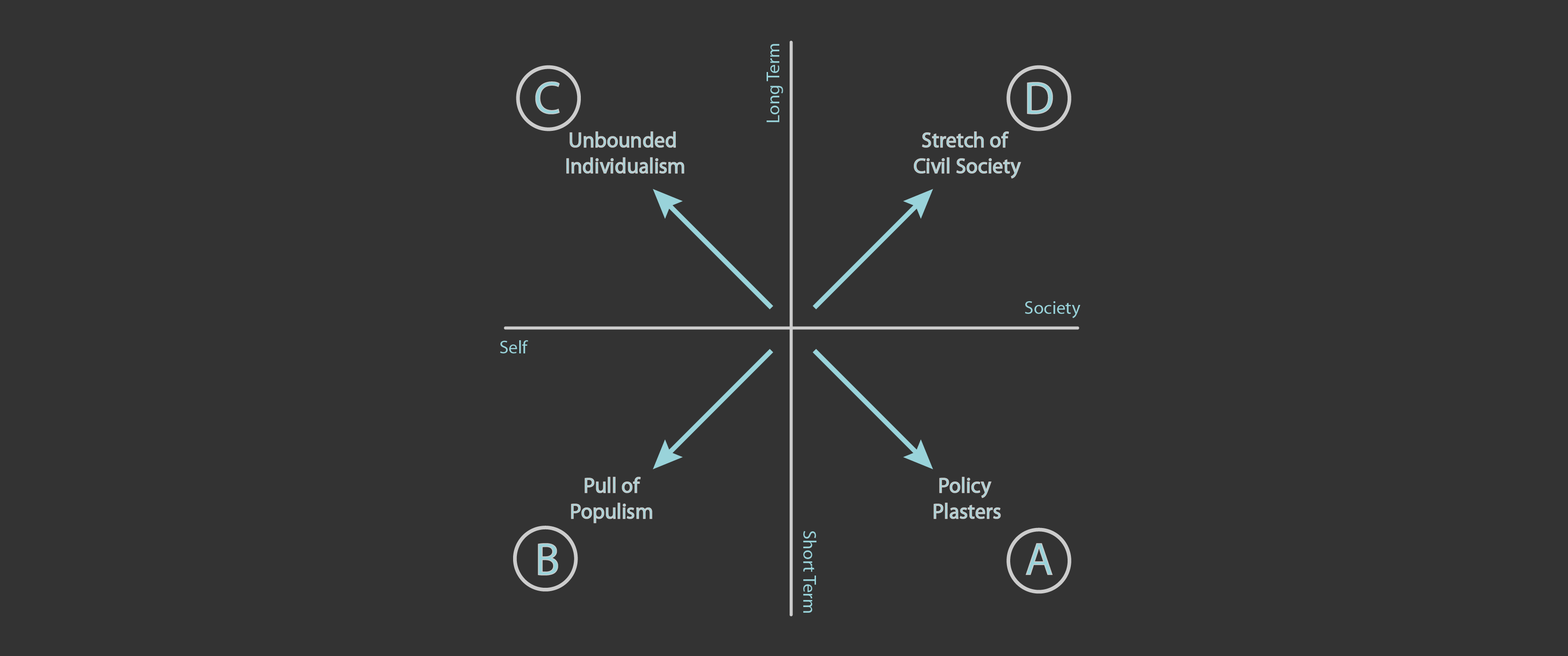Despite currently sitting in a #VisionZero conference in Stockholm, supposed to be thinking about how we embed a #safesystem for road transport, facing up to the challenges of bringing about more active and sustainable communities, something gets me thinking about social change more widely.
The conference has had a major focus on the role of the private sector to deliver change, a recognition that the public sector cannot deliver on its own. Among the international community, as well as among colleagues at home, the persistent complaint is that a lack of political will is hindering progress. Whether at national or sub-national level, there is often an a ‘absent voice’ leading the public discourse about what we want from our public realm, rather reacting the influences of industrial and civil society actors.

Rather than lament this situation, it got me thinking about some of the pressures that perpetuate this reality – and I often find a good 2×2 can help create a lens on what is going on. In this case balancing the communal needs verses those of the individual and how this plays out over time.
What are the characteristics of these four quadrants:
A) Policy Plasters – these are often observable as emergency measures to address intrinsically long term problems, so necessitate mobilising high levels of resource without clarity about how the issue will be ultimately addressed. Asylum and immigration policy, or winter pressures in the NHS stand out as clear examples where cash injections are required without addressing strategic limitations.
B) The Pull of Populism – often motivated by immediate political pressures, such as an ephemeral media agenda or electoral cycles and without building social capital, this quadrant is all too often characterised by culture wars – whether between road users or other segments in society.
C) Unbounded Individualism – having witnessed a major shift during the 21st century to concentrate capital in the hands of a small proportion of the population, giving increased freedoms to some without the obligations to wider society.
D) The Stretch of Civil Society – this quadrant is characterised by more visionary leadership, recognising that there we have to address complexity with long term, strategic and structural responses.

When talking about civil society, I’m inclined to broaden the term from meaning charities or NGOs to mean those actors within civil society that are seeking to deliver value (economic, social, cultural and natural). The #SDGs were designed to be ‘integrated and indivisible’ creating communities that are healthy, equitable, and accessible even as they deal with issues of poverty and education. Working with a number of organisations that are seeking to create and implement change, making better places, it is clear that there is a need for courageous leadership that imagines where we could be rather than reacting to our present circumstances.
In recent times, it has been easy to be quite negative about the changes that we need, but engaging over these last couple of days with pioneers in industry, research and civil society leadership I’m encouraged that there is more to be optimistic about – change is happening, and we can play a role in accelerating progress.

